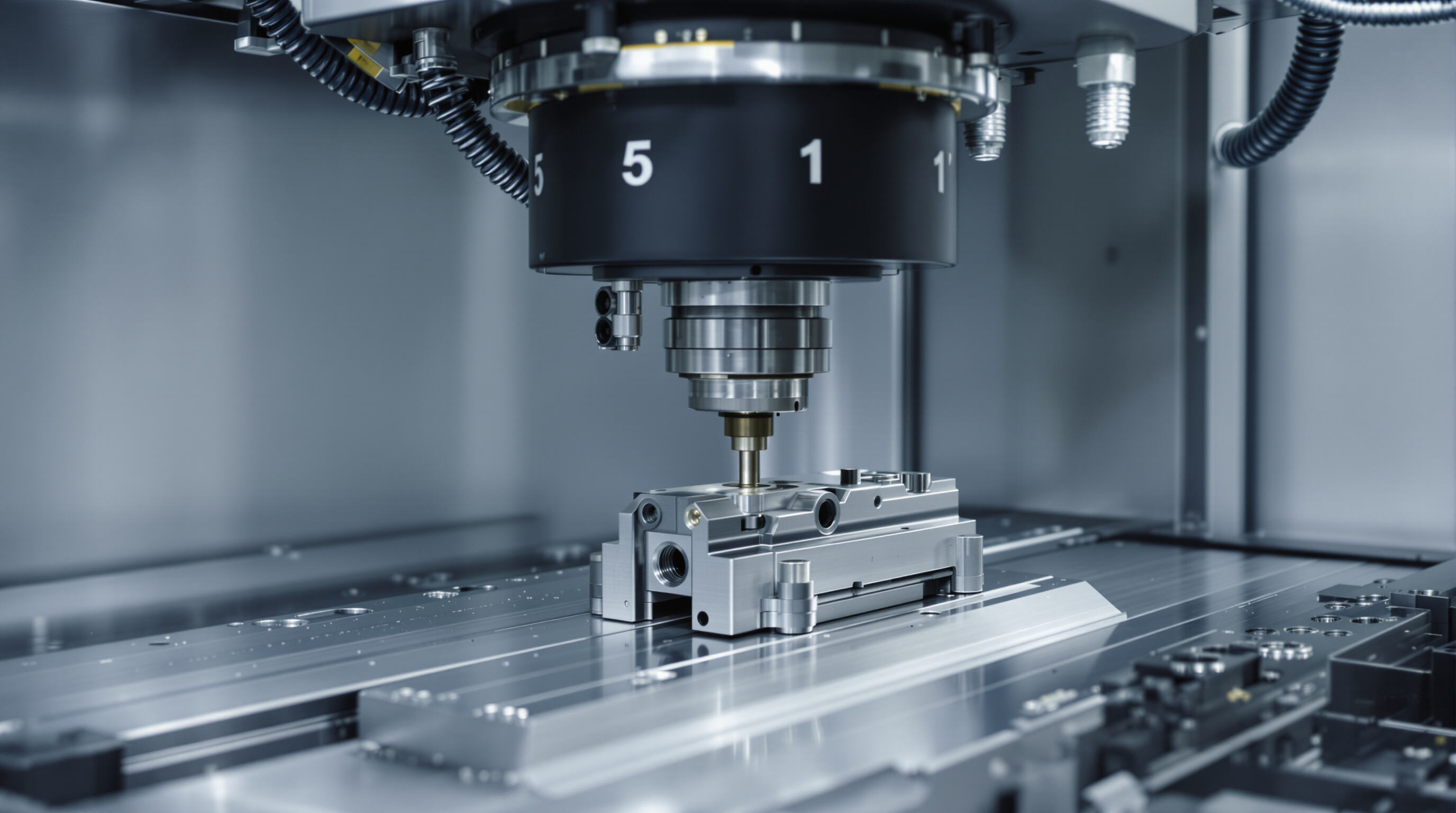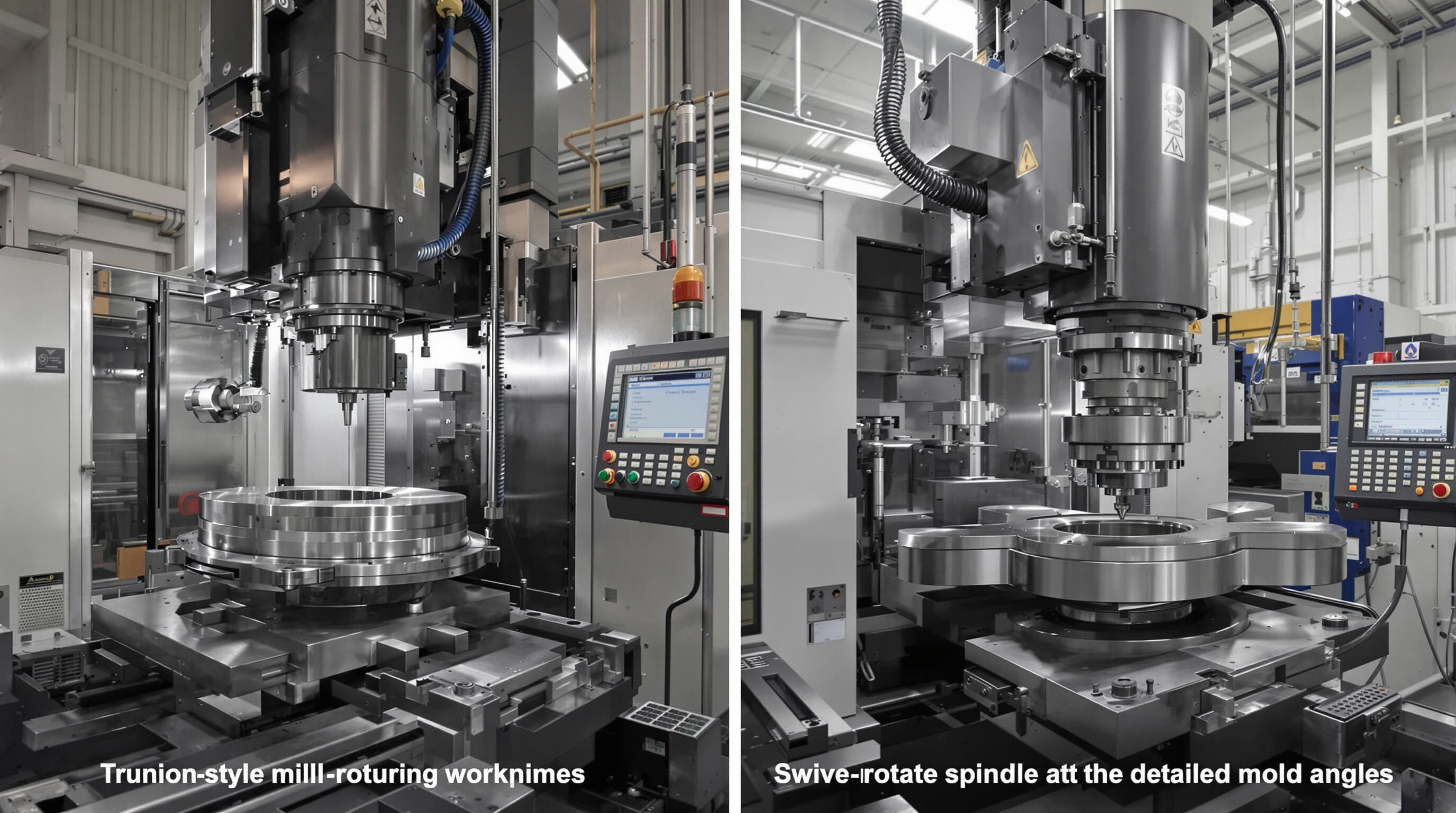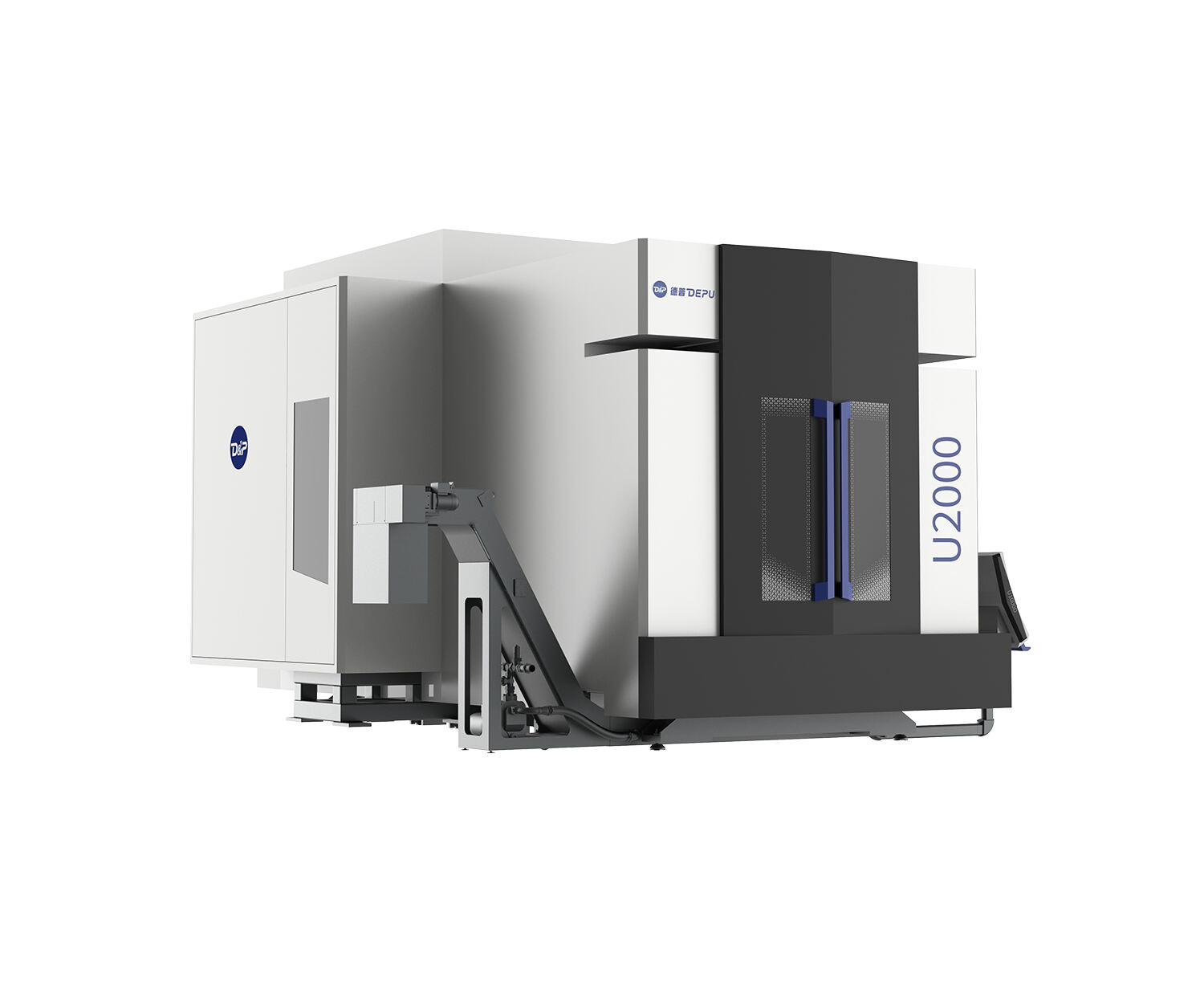Memahami mesin frais 5 sumbu Teknologi dan Cor e Keunggulan

Apa itu pemesinan 5-sumbu dan bagaimana perbedaannya dengan frais 3-sumbu?
Mesin frais CNC lima sumbu bekerja dengan tiga gerakan lurus (X, Y, Z) ditambah dua titik rotasi (biasanya A dan B). Ini memungkinkan alat untuk bergerak bebas ke semua lima arah sekaligus. Mesin 3 sumbu tradisional mengalami kesulitan dalam memproses bentuk-bentuk rumit karena harus terus-menerus disetel ulang secara manual. Namun, peralatan lima sumbu dapat memiringkan benda kerja atau alat pemotong itu sendiri untuk menjaga sudut paling optimal selama proses pemesinan. Hasilnya? Operator tidak perlu sering berhenti dan mengatur ulang peralatan. Produsen di industri seperti pembuatan pesawat terbang, produksi mobil, dan pembuatan peralatan medis sangat menghargai teknologi ini karena memungkinkan pembuatan komponen rumit tanpa mengurangi kualitas atau memperpanjang waktu produksi.
Manfaat utama pemesinan CNC 5 sumbu: waktu persiapan yang lebih singkat dan kelangsungan kerja yang lebih tinggi
Ketika suku cadang dapat dikerjakan melalui berbagai operasi sambil tetap terjepit di tempatnya, mesin frais 5 sumbu secara signifikan mengurangi kesalahan kecil yang muncul akibat perpindahan suku cadang yang terlalu banyak selama produksi. Berdasarkan beberapa penelitian yang dipublikasikan tahun lalu dalam lingkaran industri manufaktur, bengkel-bengkel yang beralih ke mesin canggih ini mengalami penurunan waktu persiapan hingga hampir dua pertiga dibandingkan waktu yang sebelumnya mereka habiskan untuk persiapan mesin 3 sumbu konvensional. Yang benar-benar membedakan mesin ini adalah bagaimana poros-poros berputarnya bekerja bersama untuk menangani bentuk kompleks seperti permukaan melengkung, undercut rumit, dan saku dalam yang sulit dijangkau, yang tidak bisa ditangani oleh mesin dasar. Berkat fleksibilitas yang dimilikinya, banyak pembuat alat (toolmaker) dan bengkel prototipe yang mulai sangat bergantung pada frais CNC 5 sumbu untuk membuat cetakan khusus, menguji desain produk baru, serta menjalankan produksi kecil di mana ketelitian menjadi prioritas utama.
Hasil akhir permukaan dan ketelitian yang unggul dalam pengolahan geometri kompleks
Jalur alat yang lebih pendek yang dimungkinkan melalui sumbu rotasi membantu mengurangi lenturan selama operasi pemesinan, menghasilkan permukaan yang tingkat kekasarannya sekitar setengahnya dibandingkan dengan yang kita peroleh menggunakan mesin tiga sumbu standar. Ketika terjadi kontak terus-menerus antara alat potong dan bahan yang diproses, getaran juga berkurang secara signifikan, memungkinkan toleransi ketat sekitar plus-minus 0,005 milimeter bahkan ketika bekerja dengan bahan sulit seperti paduan titanium atau inconel. Industri yang memproduksi komponen seperti bilah turbin pesawat terbang atau implan medis benar-benar membutuhkan tingkat akurasi semacam ini karena kecacatan kecil pada tingkat mikroskopis bisa menyebabkan gangguan fungsi komponen tersebut secara perlahan seiring waktu.
Batasan dan tantangan umum dalam pemesinan CNC 5 sumbu
Mesin frais 5 sumbu sangat bagus untuk membuat komponen yang rumit tetapi datang dengan persyaratan serius. Mesin-mesin ini membutuhkan programmer yang memahami bidangnya serta sistem khusus untuk menangani perubahan dimensi yang disebabkan oleh penumpukan panas selama operasi. Mari kita bicara angka sejenak. Biaya awal biasanya melebihi setengah juta dolar, dan biaya pemeliharaan agar mesin berjalan lancar sekitar 30 hingga bahkan 40 persen lebih tinggi dibandingkan mesin 3 sumbu biasa. Bagi banyak bengkel, terutama yang lebih kecil, ini menciptakan sebuah dilema nyata. Mereka harus mempertimbangkan pengeluaran besar tersebut dengan peningkatan kecepatan produksi yang didapat. Terkadang ketika komponen tidak terlalu rumit, kemampuan tambahan tersebut secara bisnis tidak sepadan.
Membandingkan mesin frais 5 sumbu Konfigurasi dan Dampaknya terhadap Kinerja

Desain mesin 5 sumbu tipe trunnion versus tipe swivel-rotate
Mesin tipe trunnion bekerja dengan memutar benda kerja pada dua sumbu—biasanya diberi label A (sumbu X) dan C (sumbu Z) pada meja putar. Konfigurasi ini membantu menjaga stabilitas saat memotong material yang keras, itulah sebabnya mesin ini sangat populer untuk membuat komponen yang digunakan dalam pesawat terbang dan pesawat luar angkasa. Di sisi lain, mesin tipe swivel putar memiliki spindle yang dipasang pada swivel yang berbeda, umumnya sepanjang sumbu B (sumbu Y) dan C (sumbu Z). Konfigurasi ini memungkinkan operator untuk mengakses sudut-sudut sulit yang dibutuhkan untuk cetakan detail dan bentuk kompleks. Kebanyakan bengkel menemukan bahwa mesin trunnion lebih tahan lama saat membuang material dalam jumlah besar secara cepat, tetapi ketika berhadapan dengan ruang sempit dan undercut rumit, konfigurasi swivel lebih unggul karena gangguan pada benda kerja selama operasi jauh lebih sedikit.
Konfigurasi kepala spindle ganda dan meja yang dapat dimiringkan dibandingkan
Kepala poros ganda memungkinkan alat bergerak ke segala arah yang sangat penting saat bekerja pada sudu turbin. Sementara itu, konfigurasi meja miring menggerakkan benda kerja sebenarnya di atas tempat tidur berbentuk sudut. Beberapa mesin frais 5 sumbu canggih bahkan menggabungkan kedua pendekatan ini sehingga mereka dapat memanipulasi benda kerja dan alat pemotong sekaligus tanpa perlu berhenti dan mengatur ulang posisi untuk bagian dengan permukaan ganda. Meskipun konfigurasi mesin universal memberikan fleksibilitas maksimal kepada operator, konfigurasi ini juga membawa kompleksitas tambahan. Untuk pekerjaan sederhana yang melibatkan komponen berbentuk kotak, mesin dengan meja miring cenderung lebih sesuai karena mempertahankan proses kerja yang sederhana. Stabilitas suatu mesin seiring waktu sangat bergantung pada detail desainnya juga. Mesin yang dilengkapi sistem pendingin bawaan umumnya memiliki tingkat akurasi yang lebih tinggi selama operasi yang panjang di mana fluktuasi suhu bisa menyebabkan masalah.
Memahami 3+2 axis machining dibandingkan continuous 5-axis milling
Teknik 3+2 machining memposisikan kepala potong pada sudut majemuk yang mana menyederhanakan jalur milling 3-sumbu yang rumit. Ini sangat efektif ketika menangani berbagai permukaan datar yang memerlukan penempatan presisi. Lalu ada continuous 5-axis milling di mana alat potong bergerak ke segala arah secara bersamaan. Hasilnya? Toleransi sekitar 0,02mm sesuai standar ISO, sangat cocok untuk hal-hal seperti sudu impeller yang bentuknya kompleks. Menurut beberapa penelitian dari Tooling Research Institute, beralih ke 3+2 dapat mengurangi kesulitan pemrograman hingga sekitar 40%. Namun yang benar-benar menonjol adalah kemampuan continuous milling untuk menghilangkan sama sekali pengaturan sekunder yang merepotkan. Untuk kontur rumit seperti implan medis, pendekatan ini dapat menghemat waktu pemesinan sekitar dua pertiga dari metode konvensional.
Ukuran ruang kerja, aksesibilitas bagian, dan kekakuan pada berbagai konfigurasi
Desain mesin secara langsung menentukan ruang kerja yang dapat digunakan; sistem trunion biasanya menawarkan ruang kerja 20% lebih besar tetapi mengorbankan jangkauan ke rongga dalam dibandingkan dengan konfigurasi lengan berengsel. Bandingkan metrik aksesibilitas:
| Konfigurasi | Sudut Alat Maksimum | Akses Rongga Dalam | Indeks Kekakuan |
|---|---|---|---|
| Meja Trunion | 110° | Sedang | ⭐⭐⭐⭐⭐ |
| Spindel Swivel-rotasi | 130° | Sangat baik | ⭐⭐⭐⭐⭑ |
| Universal Hibrida | 180° | Superior | ⭐⭐⭐⭐⭐ |
Kekakuan berkorelasi dengan ketahanan terhadap getaran: coran monolitik pada sistem trunion menghasilkan tingkat penghilangan material 15% lebih tinggi untuk titanium dibandingkan desain swivel kantilever berdasarkan standar pemesinan.
Mengevaluasi Presisi, Kekakuan, dan Stabilitas Termal dalam mesin frais 5 sumbu Sistem
Peran kekakuan mesin dan stabilitas dinamis dalam frais presisi tinggi
Mencapikan tingkat akurasi hingga skala mikron dengan frais CNC 5 sumbu benar-benar bergantung pada seberapa kokoh konstruksi mesin tersebut. Mesin yang mampu menahan lenturan akibat gaya pemotongan sangat penting untuk jenis pekerjaan ini. Saat produsen membangun mesin-mesin ini dengan desain struktural yang solid dan menggunakan basis granit, stabilitas yang didapat menjadi lebih baik. Hal ini membantu mengurangi getaran meskipun poros utama berputar pada kecepatan sangat tinggi seperti 15.000 RPM. Dan jelas, kekakuan mesin sangat berpengaruh terhadap detail halus pada kualitas permukaan benda kerja. Sebuah mesin frais 5 sumbu yang kaku dapat mempertahankan akurasi hingga dalam toleransi 5 mikron saat bekerja pada material sulit seperti paduan aerospace, suatu faktor penentu dalam lingkungan produksi presisi tinggi.
Sistem kompensasi termal dan presisi jangka panjang pada mesin frais 5 sumbu
Menjaga agar mesin terus berjalan secara kontinu sangat menantang karena masalah ekspansi termal. Ketika suhu berubah, bantalan dan sekrup dapat bergeser hingga 20 mikron per meter. Untuk mengatasi masalah ini, peralatan modern kini dilengkapi sensor yang terintegrasi langsung ke dalam rumah poros (spindle housing) dan komponen ballscrew. Sensor-sensor ini mengirimkan informasi secara langsung ke kontroler CNC sehingga penyesuaian dapat terjadi secara otomatis. Apa artinya ini? Mesin tetap sangat akurat, sekitar plus minus 0,001 inci, sepanjang shift kerja 8 jam penuh. Tingkat presisi seperti ini bukan hanya nilai tambah semata. Produsen implan medis sangat bergantung pada toleransi semacam ini karena penyimpangan kecil sekalipun bisa memengaruhi keselamatan pasien dalam aplikasi kritis.
Akurasi pengukuran: Standar ISO vs. kinerja di dunia nyata pada mesin CNC 5-sumbu
ISO 230-2 merinci prosedur pengujian standar yang mengandalkan teknik interferometri laser, tetapi dalam praktiknya sering bergantung pada bagaimana pengaturan dilakukan dan alat apa yang digunakan. Penelitian menunjukkan bahwa perubahan suhu saja menyumbang sekitar 60 persen dari semua ketidaktepatan pengukuran jika kompensasi tidak diterapkan dengan benar. Melihat temuan terbaru dari studi tentang operasi frais ultra presisi mengungkapkan sesuatu yang menarik juga. Saat produsen menerapkan strategi pemetaan kesalahan canggih ini, mereka benar-benar mengalami penurunan yang terlihat pada ketidakkonsistenan pengukuran. Perbaikan-perbaikan ini membantu mengurangi jurang antara hasil laboratorium teoretis dan apa yang sebenarnya terjadi selama proses manufaktur sehari-hari di lantai pabrik.
Mengoptimalkan Kinerja Poros dan Laju Penyayatan untuk pemesinan frais CNC 5 sumbu
Kecepatan Poros, Torsi, dan Kebutuhan Tenaga untuk Berbagai Material
Saat bekerja dengan mesin frais modern 5 sumbu, mendapatkan pengaturan spindle yang tepat untuk berbagai material membuat perbedaan besar. Aluminium dan material komposit bekerja paling baik saat mesin berputar di atas 40.000 RPM. Ini menjaga produksi tetap cepat tanpa membiarkan terlalu banyak panas terbentuk pada benda kerja. Situasi berubah cukup signifikan saat menangani baja keras. Material ini membutuhkan kecepatan lebih lambat antara 6.000 hingga 12.000 RPM tetapi memerlukan torsi yang jauh lebih besar, minimal 40 Newton meter agar tetap efektif dalam proses pemotongan. Menjaga akurasi posisi menjadi sangat penting selama sesi pemesinan yang panjang. Sistem kompensasi termal yang baik membantu menjaga kesalahan dalam rentang plus minus 5 mikron. Hal ini khususnya sangat krusial saat memproses titanium karena gaya pemotongan bisa berubah-ubah sangat besar selama operasi berlangsung.
Teknik Optimasi Kecepatan Penyayatan untuk Efisiensi Pemesinan 5 Sumbu
Mendapatkan keseimbangan yang tepat antara laju penyayatan (feed rate) dan beban chip menjaga alat tidak mudah bengkok sekaligus tetap mempertahankan tingkat produktivitas yang baik. Saat bekerja pada komponen dinding tipis yang sulit dalam manufaktur aerospace, sistem penyayatan adaptif mampu menyesuaikan kecepatan secara otomatis antara 15 hingga 30 persen. Menurut penelitian dari NIST pada tahun 2023, penyesuaian semacam ini mampu mengurangi total waktu siklus sekitar 22%. Namun, menangani bentuk-bentuk yang kompleks membutuhkan pendekatan khusus. Perencanaan jalur berbasis vektor untuk alat potong menjaga ketebalan chip tetap konsisten sepanjang operasi. Uji coba di industri menunjukkan pendekatan ini memperpanjang umur alat potong sekitar 35% dibanding metode linear biasa, yang tentu saja memberikan dampak signifikan saat menjalankan produksi dalam jumlah besar.
Studi Kasus: Integrasi Spindle Berkecepatan Tinggi dalam Produksi Komponen Aerospace
Seorang produsen bilah turbin melihat peningkatan siklus produksi mereka hingga hampir 20% setelah beralih ke pengaturan poros hibrida baru yang memiliki daya puncak 30 kW sekaligus kemampuan 42.000 RPM yang mengesankan. Yang benar-benar membuat sistem ini istimewa adalah cara kerjanya dalam mengatasi getaran selama operasi. Teknologi peredam aktif berhasil menurunkan pengukuran kekasaran permukaan dari sekitar 0,8 mikron hingga mencapai hanya 0,3 mikron, yang sebenarnya memenuhi standar ketat yang diperlukan untuk bilah mesin jet. Dan berikut ini juga menjadi topik pembicaraan di kalangan produsen saat ini: konfigurasi tertentu ini memungkinkan mereka untuk memproses dudukan mesin Inconel 718 berat yang berbobot sekitar 14 kilogram dalam satu pengaturan tunggal. Sebelum inovasi ini hadir, para pekerja harus melalui tidak kurang dari tiga operasi berbeda menggunakan mesin 3-sumbu standar untuk menyelesaikan pekerjaan dengan benar.
Pencocokan mesin frais 5 sumbu Fitur Sesuai Kebutuhan Produksi: Panduan Pembeli
Spesifikasi Utama yang Perlu Dievaluasi Saat Memilih Mesin Milling 5 Sumbu
Memilih 5 axis mill yang tepat membutuhkan keseimbangan antara kebutuhan teknis dengan tujuan operasional. Utamakan spesifikasi berikut:
- Dimensi ruang kerja (biasanya 500–2.000 mm pada sumbu XYZ) untuk menampung ukuran benda kerja
- Kecepatan poros utama (15.000–42.000 RPM) dan kurva torsi untuk material seperti titanium atau Inconel®
- Ketepatan posisi (<5 μm) dan metrik pengulangan sesuai standar ISO 230-2
- Kapasitas changer alat potong (24–120 alat potong) untuk meminimalkan waktu non-pemotongan
Survei komponen mesin pada tahun 2023 menunjukkan bahwa produsen yang menggunakan sistem alat potong lebih dari 40 mengurangi waktu persiapan sebesar 37% dibandingkan dengan yang menggunakan magazine lebih kecil.
Peran Produsen Utama dalam Kemajuan Teknologi 5-Sumbu
Pemimpin inovasi mendorong tiga pergeseran pasar yang kritis:
- Sistem kontrol terpadu menggabungkan interpolasi 5-sumbu dengan optimasi laju pemakanan adaptif
- Desain modular memungkinkan rekonfigurasi kepala putar/meja putar dalam waktu <4 jam
- Paket pemesinan berbasis jenis material untuk komposit serat karbon dan paduan bertingkat
Produsen-produsen ini menginvestasikan 18–22% dari pendapatan tahunan mereka dalam penelitian dan pengembangan, mempercepat solusi stabilitas termal yang mengurangi drift sebesar 62% selama operasi lebih dari 8 jam. Opsi kustomisasi kini memungkinkan para pemasok industri kedirgantaraan mengintegrasikan algoritma toolpath milik mereka secara langsung ke dalam kontroler mesin.
Secara singkat, memilih 5 Axis Mill yang tepat bergantung pada keselarasan konfigurasi, ketelitian, dan kinerja spindle dengan kebutuhan material serta tujuan produksi Anda. Baik memberi prioritas pada kekakuan untuk paduan keras atau fleksibilitas untuk geometri kompleks, menyelaraskan spesifikasi utama dengan kebutuhan operasional akan memastikan nilai jangka panjang. Bagi perusahaan yang ingin meningkatkan efisiensi dan akurasi dalam produksi komponen rumit, meluangkan waktu untuk mengevaluasi fitur-fitur 5 Axis Mill ini merupakan langkah kritis menuju keberhasilan.
Daftar Isi
-
Memahami mesin frais 5 sumbu Teknologi dan Cor e Keunggulan
- Apa itu pemesinan 5-sumbu dan bagaimana perbedaannya dengan frais 3-sumbu?
- Manfaat utama pemesinan CNC 5 sumbu: waktu persiapan yang lebih singkat dan kelangsungan kerja yang lebih tinggi
- Hasil akhir permukaan dan ketelitian yang unggul dalam pengolahan geometri kompleks
- Batasan dan tantangan umum dalam pemesinan CNC 5 sumbu
- Membandingkan mesin frais 5 sumbu Konfigurasi dan Dampaknya terhadap Kinerja
- Mengevaluasi Presisi, Kekakuan, dan Stabilitas Termal dalam mesin frais 5 sumbu Sistem
- Mengoptimalkan Kinerja Poros dan Laju Penyayatan untuk pemesinan frais CNC 5 sumbu
- Pencocokan mesin frais 5 sumbu Fitur Sesuai Kebutuhan Produksi: Panduan Pembeli

